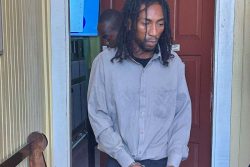Unfortunately Guyana has the dubious distinction of having the highest rate of suicide in the world. A recent spike in these grim incidences required President Granger to convene an emergency meeting. A few studies exist on the suicide problem in Guyana. The general profile discovered so far suggests the victims are mainly rural and East Indian. The previous studies have also done a good job providing the age and gender profile of the victims. They have also outlined good policies that may help in easing the pain.
 These are, of course, descriptions of a pattern that needs deeper probing to uncover causality. As an aside, we should acknowledge that the Social Sciences are essential for helping the society to obtain greater insights into this crisis. This is very important as educators consider implementing the latest perspective on ‘education’ coming from American conservative TV: that pure STEM and job training make a great education system.
These are, of course, descriptions of a pattern that needs deeper probing to uncover causality. As an aside, we should acknowledge that the Social Sciences are essential for helping the society to obtain greater insights into this crisis. This is very important as educators consider implementing the latest perspective on ‘education’ coming from American conservative TV: that pure STEM and job training make a great education system.
I have started doing some reading on the economics of suicide. The economics literature has much to say about suicide and its underlying causes. Economists have noted that suicide does not only involve social isolation and mental illness. There are many other dimensions for which we need data to measure causality, so that better policies can be put in place. A major problem existing in Guyana, however, is the lack of data on the time dimension of suicide. The two previous studies I have seen focused on a cross-sectional variation of suicides. This implies the studies focus on the descriptive profile of the victims at one point in time without exploiting the variations in suicide that could occur over time.
My co-author, Mr Sukrishnalall Pasha, and I are trying to assemble a time series data set going back as far as possible to the 1960s; we would be willing to settle for the analysis in the 1970s. To date it has been an uphill battle obtaining this data. We would welcome any help from the authorities reading this column. We would like to understand whether the occurrences have a seasonal component – for example, can we observe more suicides during the holiday celebrations?
We are also interested in knowing whether certain economic variables (or instruments) are able to explain the time variation of the suicide occurrence. What percent of the time variation can be explained by economic forces? Monthly data on unemployment in Guyana is non-existent, but it would be possible to use other proxies to figure out whether the occurrences have some co-variation with the business cycle. The time series study would be particularly helpful in determining whether clustering of occurrences are taking place over time. This is the suicide contagion phenomenon.
One of the strengths of a time series study is it allows for interacting several qualitative variables (gender, ethnicity, social status, etc) and geographic indicators with the potential economic determinants. It could be possible to figure out whether there is a trigger of a particular cluster of suicide occurrences and how long does it take, on average, for suicides to move back to zero occurrence after a cluster shock.
Economic theory says that there are costs and benefits associated with the decision to take one’s life. The benefits could be from a death pact as in cult activities, to escape emotional pain, adrenaline rush, and an unsuccessful attempt to kill oneself that elicits sadness (cry for help), remorse and economic rewards from family, friends and society.
The costs involve time and money spent to obtain the knowledge and equipment to conduct the act, mental preparation, belief/non-belief of punishment in the afterlife, and the opportunity cost of not living to experience life eventually getting better.
Preventing suicide involves increasing the cost of suicide and reducing the benefits. One way of increasing the cost of suicide is to give people hope in this life. This may require counselling that presents a case of optimism in the future. People have to be given a dose of realistic optimism and not propaganda. Who knows perhaps if politicians grow up people might be more optimistic about the future. Perhaps more intelligent rebuttals from the opposition in Parliament may present a sense of hope.
Increasing the cost of suicide would also involve making it difficult to obtain the necessary information and tool. Guyana is a religious society and most people believe in the afterlife; therefore, religious leaders have to do their part and in so doing increase the expected cost in the afterlife of suicide. Since the prima facie profile so far indicates that Hindus might be committing suicide at a higher rate, organisations like Dharmic Sabha need to step up to the plate and do more for their people with the same vigour (or even more vigour) they have delivered the Hindus to PPP at election time.
One research paper by Dave Marcotte (2003) in the Southern Economic Journal re-examined the basic economic theory of suicide and in so doing extended the “cry for help” phenomenon to its economic rationale. Marcotte notes that most suicide attempts in the United States do not end fatally. The implication is if we can study these individuals who survived we would have a wealth of information motivations and causation. This ought to be a second study after a time series study is conducted. We cannot interview the dead – although we can search for cross-section and time series patterns from the data the dead leaves – but we certainly can interview those who attempted and survived.
If it is found that people’s economic, family support and social conditions improve after a suicide attempt, then there might be some rational economic motive behind the attempt in the first place – the cry for attention. A national data base should be established to record at the individual level those who have attempted and survived. Unlike the time series study this approach allows for sampling of individuals over a cross-section. They are all important approaches and we hope researchers at University of Guyana will tackle this problem.
Comments: tkhemraj@ncf.edu







